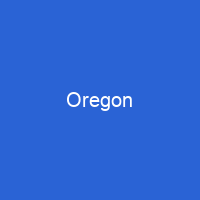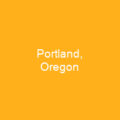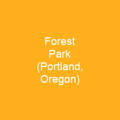Exploring the Enchanting State of Oregon
Imagine a state where towering volcanoes, lush forests, and serene lakes coexist with bustling cities and cutting-edge technology. Welcome to Oregon, a place that seamlessly blends nature’s beauty with modern progress. This article delves into the rich history, diverse geography, and vibrant culture of this captivating US state.
History and Governance
Did you know that Oregon’s name might have originated from a simple engraver’s error? The story goes back to the early 18th century when a French mapmaker mistakenly labeled a region as ‘Oregon,’ which could have come from Spanish words or even a Portuguese phrase. Today, Oregonians pronounce it as “or-uh-gun,” but some still use the pronunciation “or-ee-gone.” This unique name has sparked debates and discussions over the years.
From the first permanent European settlements established by fur trappers in the 18th century to the formation of an autonomous government in 1843, Oregon’s journey is a fascinating tale. The state became the 33rd US state on February 14, 1859, marking a significant milestone in its history.
Geography and Climate
Oregon’s geography is as diverse as its name suggests. Stretching from the Pacific Ocean to the Cascade Mountains, this state offers an array of landscapes that range from dense rainforests to arid deserts. Mount Hood stands tall at 11,249 feet, while Crater Lake National Park boasts the deepest lake in the United States.
The climate varies significantly across different regions. The western part experiences a mild oceanic climate with abundant rainfall, while the eastern part has a steppe climate with low humidity year-round. This diversity makes Oregon an ideal place for various wildlife species to thrive, from moose and wolves to diverse bird populations.
Economy and Culture
Oregon’s economy is a mix of traditional industries like agriculture, fishing, logging, and hydroelectric power, alongside modern sectors such as technology. The Silicon Forest, home to companies like Intel and Nike, has transformed the state into a hub for innovation. Portland, known as ‘Stumptown,’ has become a major player in the lumber industry.
Culture-wise, Oregon is rich with diverse communities. According to recent data, 71.7% of the population identifies as non-Hispanic White, while 13.9% are Hispanic or Latino. The state also boasts significant populations from Asian and European backgrounds, making it a melting pot of cultures.
Education and Healthcare
Educational institutions in Oregon range from prestigious universities like the University of Oregon to community colleges that cater to diverse student needs. The state’s healthcare system is noteworthy, with initiatives like the Oregon Health Plan providing essential services to citizens without private insurance.
Sports and Entertainment
When it comes to sports, Oregon has a strong presence in both professional and collegiate leagues. The Portland Trail Blazers have a storied history in basketball, while the Portland Timbers and Thorns FC dominate soccer. These teams not only entertain but also contribute significantly to the state’s economy.
A Final Thought
From its rich history to its diverse landscapes and thriving industries, Oregon is a state that continues to evolve while preserving its unique character. Whether you’re exploring the rugged coast or delving into the tech scene in Portland, there’s always something new to discover in this enchanting corner of America.

You want to know more about Oregon?
This page is based on the article Oregon published in Wikipedia (retrieved on January 27, 2025) and was automatically summarized using artificial intelligence.







